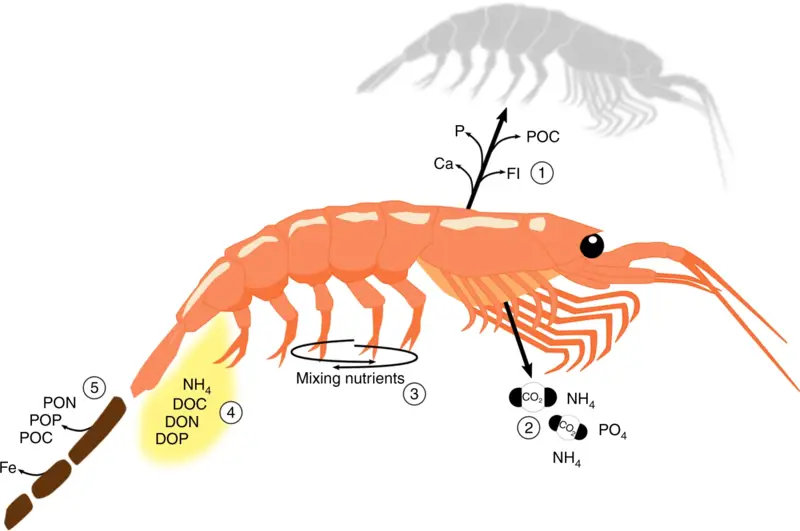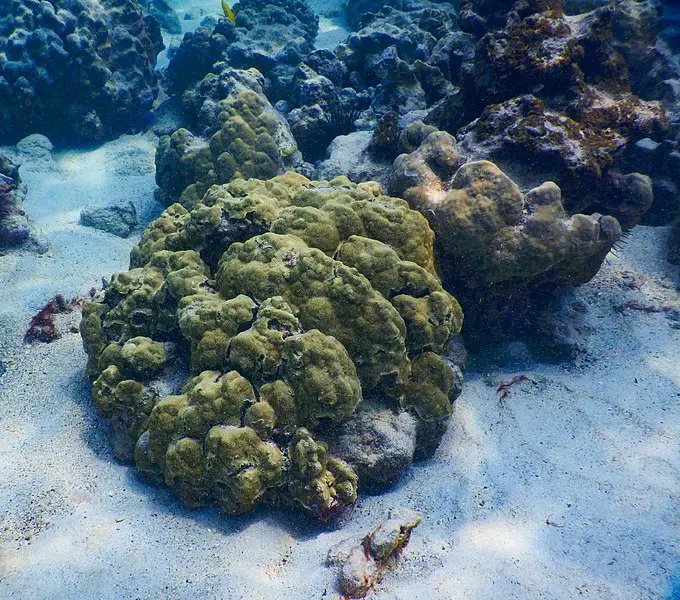Shrimp are a wonderful addition to many aquariums. They just kind of dither about at the bottom of the tank, constantly searching for something to eat.
They’re extremely low maintenance and are great fun to watch, but if you’ve ever seen your shrimp eating poop, then you may be baffled by the behavior.
So what’s the deal with the shrimp poop in your aquarium?
Freshwater shrimp are extremely low maintenance and do not produce much waste, making them great for many aquariums. They do not actually eat poop; instead, they are searching for organic matter and most likely picked up the poop by mistake.
As funny as it may seem, shrimp don’t actually eat poop, but if you’re wondering why you’ve observed your shrimp picking it up and putting it in its mouth, then you’re probably curious what causes this behavior.
The rest of this article will explore the behaviors of shrimp and whether or not they actually eat poop.
Do Shrimp Produce a Lot of Waste?
Shrimp are one of the lowest rated creatures when it comes to adding bioload to a tank. Not only do they help clean up organic matter in the tank that can produce ammonia, but they are also very small and don’t contribute as much waste to the tank as you might think.
Of course, if your tank is absolutely overrun with shrimp, or you have several large species of shrimp, then of course you are going to be adding more living things to the tank that produce waste.
But as a whole, compared to fish, shrimp produce very little waste and are adept at cleaning up leftover food or organic decaying matter on the bottom of the tank. You shouldn’t take this as an excuse to neglect your water changes or filtration, though.
Shrimp are very small, and the amount they contribute to removing ammonia and nitrate-producing leftover food is minimal. If you have a ton of shrimp, however, then their combined waste is going to make your substrate or sand look a little messy.
Make sure you stay on top of doing regular water changes and actively siphon or vacuum out any gunk, leftover food, or poop that you see. Plunging below the surface is essential to suck up any unwanted waste that’s seeped into your substrate material.
Air stones are also useful to keep waste floating instead of stagnating on the floor of your aquarium.
Do Freshwater Shrimp Eat Poop?
Freshwater shrimp are commonly believed to eat poop. You may have observed the behavior yourself, where some poop is scooped up into a shrimp’s mouth; however, the reality is that freshwater shrimp don’t eat poop. In fact, no fish is known to eat poop.
If you think about it, poop is the waste product of everything that the body doesn’t want, and even cleaner fish that eat decaying matter won’t touch it as a result. So why does it so often look like your freshwater shrimp are shoveling the stuff up?
The simple reason is that shrimp are constantly on the lookout for food. Their routine all day every day is to use their legs to scoop food into their mouths.
For the most part, they are looking for any kind of decaying organic matter― dying plant leaves, algae, plankton, dead insects, plant matter― they’ll eat it all. If a fish or another shrimp dies in your tank, you may notice that the other shrimp are the first to be part of the cleanup crew.
When it comes to poop, especially if your tank is dirty, shrimp will recognize that they’ve put something that’s not food in their mouth and spit it out. In short, putting something in its mouth is a shrimp’s only way of testing whether or not it’s worth eating.
In the case of poop, particularly if there are loads of it in the tank, this unpleasant accident will often occur as your shrimp looks for those edible goodies that may be around or even on top of the poop that they don’t want.
Since shrimp will eat anything of value to them and need to eat often since their food is usually very small, the odds of them accidentally putting poop in their mouth is a lot higher than any other fish.
How to Handle Shrimp Waste
If you’ve got tons of shrimp in your tank, then you’re going to want to be careful siphoning your tank to avoid sucking any shrimp up the siphon. One popular method is to feed your shrimp up to 30 minutes before doing a water change.
That way, many of your shrimp will gather at one end of the tank, allowing you a lot more freedom to clean up any poop or muck on the bottom of your tank.
You should make sure you go just beneath the surface―whether you gently dig the siphon in or rake it aside with your hand―for best results.
As a whole, you don’t need to worry about shrimp waste any more than your other fish, but you should make sure there’s not an excessive buildup of waste all the same.
The Verdict
Before getting shrimp, people often wonder how much bioload they have and whether they’re suitable for their tank. In short, shrimp are often a great addition to tanks with suitable tank mates. They produce very little waste and serve to liven up a tank very well.
It’s amusing that the myth of shrimp eating poop has perpetuated itself for so long. People observe odd behaviors and wonder what their shrimp are doing. The simple answer is that they’re just checking for food, not actually eating the waste matter on the floor of the tank.
No fish actually eats waste matter, at least none that have been discovered yet. Instead, shrimp are scavengers looking for any leftover plant or organic matter to eat and will spit poop back out quickly as soon as they realize what they’ve got.


